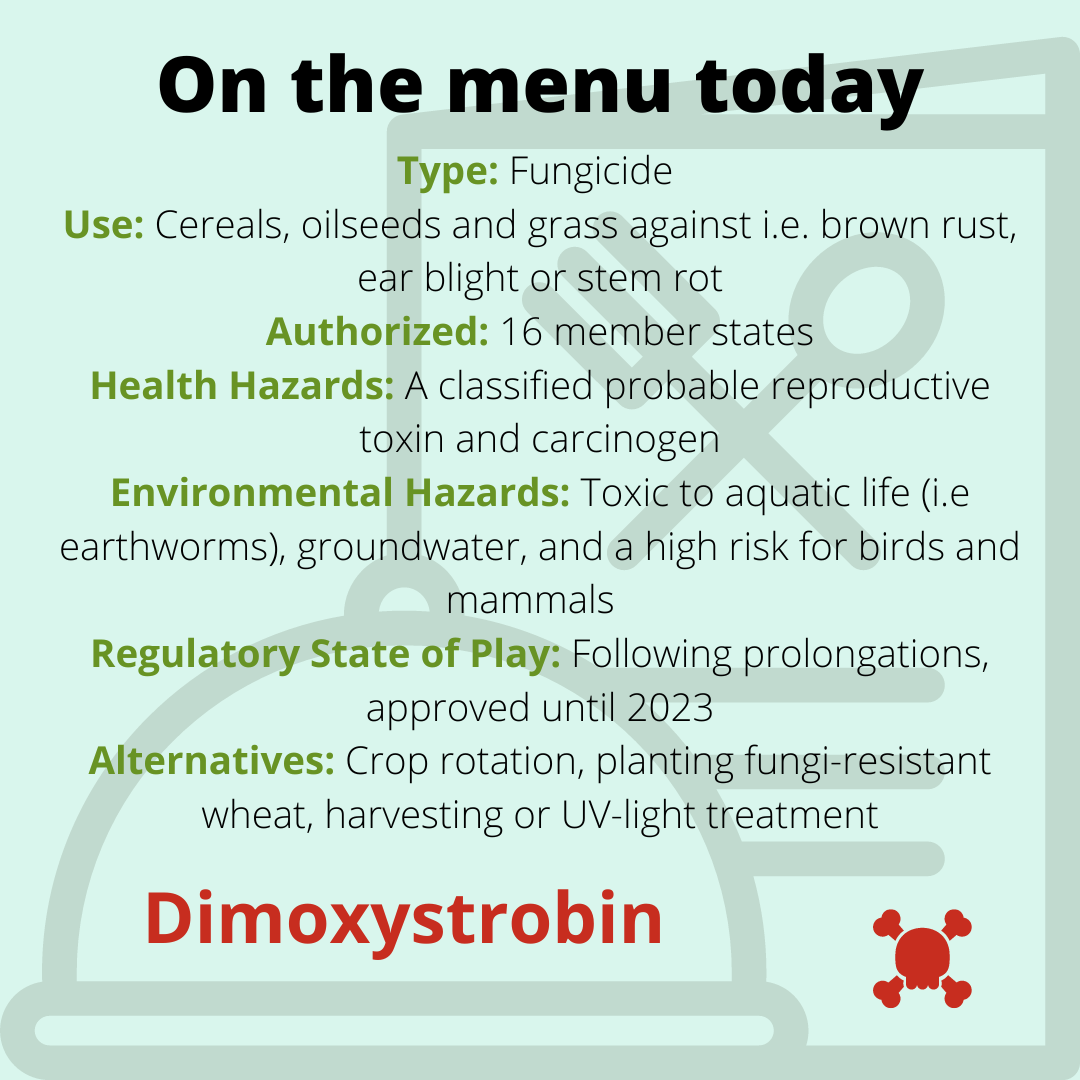Type: Fungicide
Health Hazards: A classified probable reproductive toxin and carcinogen (“R2” and “C2”). Studies showed adenoma, adenoma-carcinoma and thyroid tumours; developmental toxicity.
Environmental Hazards: Classified as very toxic to aquatic life with acute and long-lasting effects. High chronic risks to aquatic invertebrates, algae and in particular very high risks to fish and earthworms; high risks to birds and mammals. Risk for groundwater pollution by persistent metabolites.
Exposure: Authorised in 16 member states.
Residues present in food: 3 Maximum Residue Limits (MRLs) above the Level of detection (LOD) of 0.01 mg/kg are established, ranging from 0.08mg/kg to 0.3 mg/kg per product.
Regulatory State of Play: Following seven “exceptional” prolongations (each for one year), approved until 01/2024. The last extension is challenged in EU Court by PAN Europe. This case is also directed against the system of automatic prolongations. The last comprehensive review report on dimoxystrobin was in 2006. Finally, in May 2023, the EU decided to ban this pesticide from 2024.
Use: Authorised use as a fungicide in northern and southern Europe for outdoor foliar application in cereals, oilseeds and grass; for example against Brown rust, Ear blight, Stem rot. Outdoor foliar application authorised in winter 28-35 days before harvest.
Alternatives: In wheat, the best alternative is planting fungi-resistant wheat varieties as well as varieties that ripen early. Crop rotation is important since fungi can overwinter in plant rests; hygiene is key. Moderate nitrogen use is crucial since high nitrogen helps the funghi to develop. It helps to choose open fields that allow the wind to dry the crop. For monitoring purposes, a leave/wet monitor in the field is a good option; intervention (like harvesting) can be done if the fungi pressure is too high. UV-light treatment is also an intervention option.
